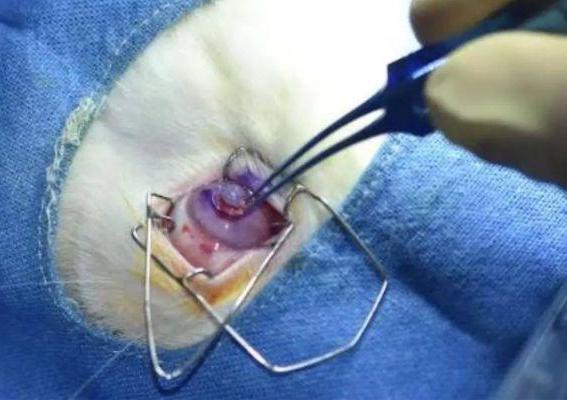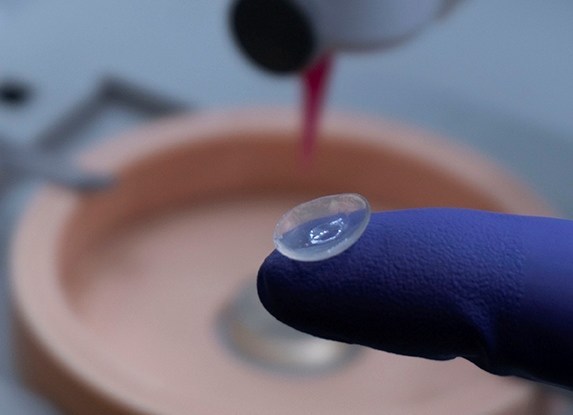
From the lecture on tissue engineering, I found impressive the number of applications of 3D printing: I had no idea that this technology could be used to create entire human organs for transplantation! This led me to look more into recent advances in 3D printing, where I came across this article1 that described the first 3D printed cornea developed in India.
How was this 3D cornea developed?
In the video below (edited from this YouTube video), I explain the development and wider consequences of this 3D cornea.

While writing the script and editing the above video, I started to wonder how regulations about consent to donate human stem cells for research purposes differ from those described in the bioethical lecture, including the Human Tissue Authority instituted in 2005 in the UK.
According to this government’s website2, guidelines for stem cell research in India have been established by the Indian Council of Medical Research (ICMR) and the Department of Biotechnology (DBT) since 2007.
Both in the UK and Indian regulations, the donor must be aware of the specific research purposes and is required to be mentally capable of giving consent. This made me realise that stem cells are worldwide considered very powerful tools for scientific advancements but their use must be tightly regulated by multiple laws and authorities to prevent unethical research.

While reading this journal’s article3 to dig down more on how the cornea was made, I found out that the newly developed bio-ink can be used as a new treatment. It is able to save the patient’s sight by sealing the corneal perforation to prevent infection during war-related injuries or in a rural area without nearby eye care facilities. I had never thought that materials or tools created to address a specific research aim could become discoveries for a new patent themselves!
What are the advantages & disadvantages of this 3D printed cornea?
Since multiple news articles1,3,4 celebrated the development of this cornea, I was curious to know whether this technology could address all the concerns coming out of my mind: Is it safe? Is it biocompatible? Is it comfortable? Therefore, I decided to search for pros and cons using two different sources: a more subjective journal’s article3 versus a more objective scientific paper5.
| Advantages3 | Disadvantages5 |
| 1) Natural, biocompatible, free of animal residues, and safe 2) Printable in different diameters (from 3mm to 13mm) to meet diverse requirements 3) Each human donor stem cell can contribute for the preparation of three 3D printed corneas 4) The tissue coming from donor corneas needs to meet lower optical standards compared to those required for a transplantation | 1) Uncomfortable to wear 2) Transplantation process is complex 3) Multiple surgeries and long-term topical medication is often required 4) Limited field of view 5) Unsatisfactory aesthetic appearance 6) Potential for post-operative complications such as extrusion and glaucoma |

From this insightful learning journey, I realised that a 3D printed cornea could become a concrete solution in future years to bypass the difficulties of finding a donor match and the complications associated with synthetic corneas. For instance, a good surgeon should correctly perform transplantation surgery, and the unaesthetic appearance or the limited field seems to be better than the alternative of blindness. However, the side effects of medication and post-operative complications could significantly delay a potential application in humans any time soon.
All news articles1,3,4 emphasise that one of the most important benefits of the 3D cornea is that it is free of animal residues. I did not know that animal products cannot be used for research purposes in India, since this is perfectly accepted in the country I live in, the UK. I learned that there are many other factors that can significantly affect scientific research, including religion or social acceptability. As a future biomedical scientist, I will keep this in mind while designing new products, tools or drugs in order to respect the target countries’ policy, religion, culture and tradition.
References
- 3D Printing Industry: “Scientists say India’s first 3D printed cornea can be used in humans after successful animal trial”, written by PAUL HANAPHY, on August 16, 2022. More information at this link: https://3dprintingindustry.com/news/scientists-say-indias-first-3d-printed-cornea-can-be-used-in-humans-after-successful-animal-trial-213745/
- Association for the Advancement of Blood & Biotherapies. More information at this link: https://www.aabb.org/regulatory-and-advocacy/regulatory-affairs/regulatory-for-cellular-therapies/international-competent-authorities/india
- tct magazine: “3D printed human cornea developed by team of clinicians and scientists in India”, written by OLIVER JOHNSON on August 17, 2022. More information at this link: https://www.tctmagazine.com/additive-manufacturing-3d-printing-news/latest-additive-manufacturing-3d-printing-news/3d-printed-human-cornea-developed-by-team-of-clinicians-and-scientists/
- The Times of India: “Hyderabad scientists develop India’s first 3D-printed cornea”, written by Syed Akbar on Aug 14, 2022. More information at this link: https://timesofindia.indiatimes.com/city/hyderabad/hyderabad-scientists-develop-indias-first-3d-printed-cornea/articleshow/93560273.cms
- Holland, Gráinne & Pandit, Abhay & Sánchez-Abella, Laura & Haiek, Andrea & Loinaz, Iraida & Dupin, Damien & Gonzalez, Maria & Larra, Eva & Bidaguren, Aritz & Lagali, Neil & Moloney, Elizabeth & Ritter, Thomas. (2021). Artificial Cornea: Past, Current, and Future Directions. Frontiers in Medicine. 8. 770780. 10.3389/fmed.2021.770780.